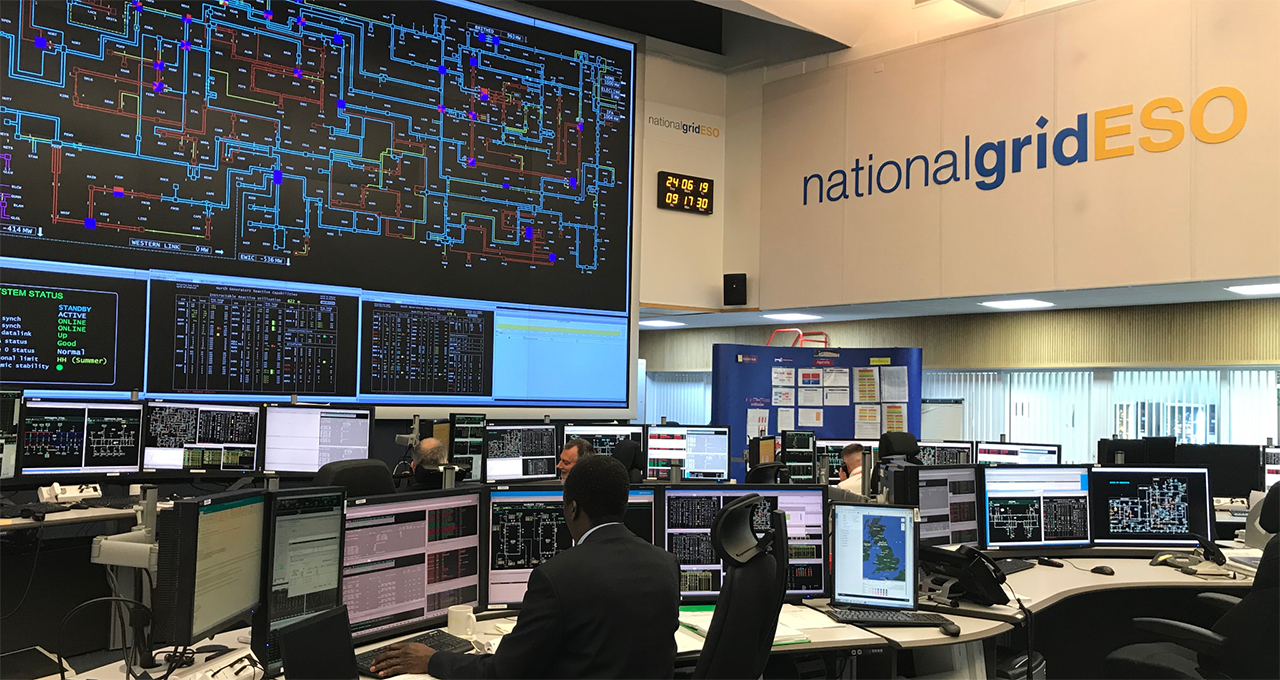Cloudy British weather is the butt of many jokes — but the United Kingdom’s national power grid is making the most of its sunshine.
With the help of Open Climate Fix, a nonprofit product lab, the control room of the National Grid Electricity System Operator (ESO) is testing AI models that provide granular, near-term forecasts of sunny and cloudy conditions over the country’s solar panels.
These insights can help ESO, the U.K.’s electric grid operator, address a key challenge in renewable energy: Sudden cloud cover can cause a significant dip in solar power generation, so grid operators ask fossil fuel plants to overproduce energy as backup.
With better forecasts, ESO could cut down on the extra fossil fuel energy held as reserve — improving efficiency while decreasing carbon footprint.
“Traditional weather models aren’t very good at predicting clouds, but using AI and satellite imagery, we can bring a lot more accuracy to solar forecasting,” said Dan Travers, co-founder of Open Climate Fix, a U.K.-based startup. “Solar energy is really effective at displacing coal, but grid operators need accurate forecasts to make it possible to integrate large amounts of solar generation — so we see a lot of opportunity in bringing this solution to coal-heavy electric grids worldwide.”
Open Climate Fix is a member of NVIDIA Inception, a global program that offers cutting-edge startups expertise, technology and go-to-market support. The team publishes its datasets, dozens of models and open-source code to HuggingFace and GitHub.
Each colored dot on the map represents a solar photovoltaic system. Blue dots represent low solar-energy output, yellow dots signify high output and black dots are systems with no data.
AI to Catch a Cloud and Pin It Down
Before the advent of renewable energy, the experts managing the electric grid day-to-day only had to worry about the variability of demand across the network — making sure there was enough power generated to keep up with air conditioners during a heat wave, or electric stoves and appliances on weekday evenings.
By adding renewables such as wind and solar energy to the mix, the energy grid must also account for weather-related variation in the level of supply. Satellite images provide the most up-to-date view to determine when clouds are coming between photovoltaic panels and the sun.
Open Climate Fix’s AI models are trained on terabytes of satellite data captured at five-minute intervals over Europe, the Middle East and North Africa. Additional data sources include years’ worth of hourly weather predictions at ten-kilometer resolution, topographic maps, information about the time of day and the sun’s position in the sky, and live readings from around solar panels across the U.K.
The team is using some of the most recent deep learning models for weather modeling including MetNet, GraphCast and Deep Generative Model of Radar. They’ve shown that their transformer-based AI models are 3x better at predicting solar energy generation than the forecasts generated by ESO’s traditional methods. The increased precision can help ESO reach its goal of being able to operate a zero-carbon electric grid by 2025.
“The physics-based forecasting models are powerful for predicting weather on the scale of days and weeks, but take hours to produce — making them ill-suited for predictions at the hour or minute level,” said Travers. “But with satellite images captured at intervals of a few minutes, we can get closer to a live view of cloud cover.”
AI’s Working on Sunshine
Cloud cover is of particular concern in the U.K., where cities including London, Birmingham and Glasgow receive an average of 1,400 or fewer hours of sunshine each year — less than half that of Los Angeles. But even in desert climates where cloudy days are rare, Open Climate Fix’s AI models could be repurposed to detect when solar panels would be covered by dust from a sandstorm.
In addition to forecasting for the entire U.K., the nonprofit is also developing models that can forecast how much energy individual solar panels will capture. This data could help large solar farm operators understand and maximize their energy output. Smart home companies, too, could use the information to optimize energy use from solar panels on customers’ roofs — giving homeowners insights about when to run power-hungry devices or schedule electric vehicle charging.
Open Climate Fix uses a cluster of NVIDIA RTX A6000 GPUs granted through an NVIDIA Hardware Grant to power its work. When training multiple models at the same time, the team shifts its overflow workload to NVIDIA A100 Tensor Core GPUs available through cloud service providers.
“The hardware grants have helped us develop and iterate on our models more easily,” said Jacob Bieker, a machine learning researcher at Open Climate Fix. “When our team is first debugging and training a model, it’s two or three times faster to do so locally.”
Read about NVIDIA’s work in power and utilities and apply to join NVIDIA Inception.
Discover how AI is powering the future of clean energy.
Main image of National Grid ESO Electricity National Control Center, courtesy of ESO Media Center
